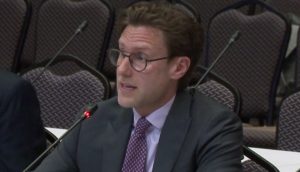Since this time last year there has been a huge influx of change in the real-time bidding market in Canada. To check the pulse of the buying platform for video and display ads on the web, video marketing company TubeMogul is hosting Exploring the RTB Wilderness, a panel event at The Spoke Club in Toronto this afternoon. It’s the first of what Grant Le Riche, director of TubeMogul in Canada, says will be a series of educational events hosted by the company.
MiC caught up with two of the event’s panellists, Mladen Raickovic, GM, data driven media at Olive Media, and Tessa Ohlendorf, managing director, Cadreon, to ask what has changed in the past year, what still needs to change and how that will happen.
What is the state of real time video buying in Canada?
Raickovic: From my perspective, RTB is still in the beginning stages. Events like this today are helping to educate people, and as people get more up to speed I think the adoption of video in RTB will increase, or the demand at least will increase, because there is just a demand for more video.
Ohlendorf: I see the space as being fairly new still, I know we are just getting started. From all the work that we have been doing so far it has been exciting because there are a lot of opportunities but at the same time we are just at the beginning to test where things are at for various advertisers. We weren’t expecting to see that much demand in video but there has been a lot this quarter.
How is the RTB space different now than it was one year ago in Canada?
Raickovic: The last 12 months have been a period of education. One year ago there was a small handful of people talking about RTB and they were really excited about it, I think what has happened in the last 12 months is RTB has become more of a broader conversation. People realize now that they need to know what it is. The premium publishers have also put their money where their mouth is, and have totally committed to the model and want to make it work.
Ohlendorf: I think the difference from one year ago to now is that we have seen enormous growth on the buy side. Over the past year I have seen enormous impact on the way people are thinking and talking about RTB on the agency side. There is still a lot of education that can take place, but even from this point last year to now there is a general sense that people know the basics, which I think wasn’t true last year. There is still a lot of work to be done, from educating the planning teams all the way up in the agencies as well as the executive level on the client side.
What still needs to change?
Raickovic: What we are trying to do at Olive is to make inventory available for RTB as soon as possible so it isn’t about having a bunch of unsold inventory and then putting it into the open marketplace. We are trying to create an environment where we can put up the best quality inventory and put it up as soon as we can so it gives advertisers the opportunity to buy the inventory they need when they need it. The other part is getting advertisers trained and educated on what’s happening because I think it’s a bit of a different process than they are used to.
Ohlendorf: I agree with Mladen on the education piece, I think that is still a big focus for the upcoming year, especially the future benefits because I think there are a lot of things that can be done with a long-term view on RTB. Once people are educated on the basics then we can educate them on the future and the various aspects of what the technology can do. I think also on the inventory side we need to go through a period of testing and consolidation on the private market side. From a management perspective it is going to be a lot of work to do set-up, trouble shooting and testing on so many PMPs and also spending to try and figure out what’s working and what’s not. And then the agency skills from media people and planners will have to beef up and train how they work with trading desk teams.























